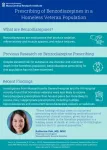(Press-News.org) Researchers at the University of Pittsburgh and KU Leuven have discovered a suite of genes that influence head shape in humans. These findings, published this week in Nature Communications, help explain the diversity of human head shapes and may also offer important clues about the genetic basis of conditions that affect the skull, such as craniosynostosis.
By analyzing measurements of the cranial vault — the part of the skull that forms the rounded top of the head and protects the brain — the team identified 30 regions of the genome associated with different aspects of head shape, 29 of which have not been reported previously.
“Anthropologists have speculated and debated the genetics of cranial vault shape since the early 20th century,” said co-senior author Seth Weinberg, Ph.D., professor of oral and craniofacial sciences in the Pitt School of Dental Medicine and co-director of the Center for Craniofacial and Dental Genetics. “We knew from certain rare human conditions and animal experiments that genes play an important role in vault size and shape, but very little was known about the genetic basis for typical features we see in the general population, such as what makes someone’s head long and narrow versus short and wide. This study reveals some of the key genes driving variation in this part of the human body.”
According to the researchers, one application of better understanding the factors that drive natural variation in human head shape is informing paleoanthropology studies, potentially shedding light on the early development of modern humans.
Weinberg and colleagues used magnetic resonance (MR) scans from more than 6,000 adolescents to extract 3D surfaces corresponding to the cranial vault. After dividing the 3D vault surfaces into incrementally smaller anatomical subparts and quantifying the shape of these subparts, they tested more than 10 million genetic variants for evidence of statistical association with measures of vault shape.
“Previous genetic studies of the cranial vault involved a small number of relatively simple measures,” added Weinberg. “While such measures are often easy to obtain, they may fail to capture features that are biologically relevant. Our analysis used an innovative approach capable of describing 3D vault shape in much more comprehensive and nuanced ways. This approach increased our ability to find genetic associations.”
An important discovery was that many of the strong associations are near genes that play key roles in the early formation of the head and face and regulation of bone development. For example, variants in and near the gene RUNX2, a major player in coordinating development of the skull, were associated with multiple aspects of vault shape.
While some genes, including RUNX2, had global effects involving the entire vault, others showed more localized effects that only impacted a specific portion of the vault, such as the central forehead.
When the researchers compared the 30 genomic regions associated with head shape across participants with European, African and Indigenous American ancestry, they found that the majority of genetic associations were shared across these different ancestral groups.
Although the study focused on healthy participants, the findings may reveal important clues about the biological basis of diseases involving the cranial vault, according to Weinberg.
One of these conditions is craniosynostosis, which occurs when the bones of the skull fuse too early while the brain is still growing rapidly. Without neurosurgery, craniosynostosis can cause permanent disfigurement, brain damage, blindness and even death. The team showed that variants near three genes associated with vault shape, BMP2, BBS9 and ZIC2, were also associated with craniosynostosis, suggesting that these genes could play a role in the development of the disease.
“This kind of study is possible due to the availability of publicly funded resources,” said Weinberg. “The original study that generated these MR scans is focused on understanding brain development and behavior. By creatively leveraging these resources, we have managed to advance discovery beyond that original scope.”
Other authors on the study were Seppe Goovaerts, Hanne Hoskens, Ph.D., Meng Yuan, Dirk Vandermeulen, Ph.D., all of KU Leuven; Ryan J. Eller, Ph.D., Noah Herrick, Ph.D., and Susan Walsh, Ph.D., all of Indiana University–Purdue University Indianapolis; Anthony M. Musolf, Ph.D., and Cristina M. Justice, Ph.D., both of the National Human Genome Research Institute; Sahin Naqvi, Ph.D., and Joanna Wysocka, Ph.D., both of Stanford University; Myoung Keun Lee, Heather L. Szabo-Rogers, Ph.D., Mary L. Marazita, Ph.D., and John R. Shaffer, Ph.D., all of Pitt; Paul A. Romitti, Ph.D., of the University of Iowa; Simeon A. Boyadjiev, M.D., of the University of California, Davis; Mark D. Shriver, Ph.D., of Penn State University; and Peter Claes, Ph.D., of KU Leuven and Murdoch Children’s Research Institute.
This research was supported by the National Institute of Dental and Craniofacial Research (R01DE027023, R01DE016886, R03DE031061 and X01HL14053) and the Intramural Research Program of the National Human Genome Research Institute, National Institutes of Health
END
New study reveals the genetics of human head shape
2023-11-17
ELSE PRESS RELEASES FROM THIS DATE:
Miniature device offers peace of mind for diabetics
2023-11-17
The first glucose self-monitoring system created in 1970 weighed three pounds, was initially designed only for physicians’ offices and needed a large drop of blood for a reading. Over 50 years later, researchers at Texas A&M University are working to create a fully injectable continuous glucose monitor (CGM) so small it rivals a grain of rice and can be used with an external optical reader to measure sugar levels at any given time.
While CGMs have advanced over the last 25 years, current models can still be a nuisance to the user and the required upkeep may discourage use. To address this issue, two faculty members from the Department of Biomedical Engineering ...
Argonne receives funding to advance diversity in STEM
2023-11-17
The U.S. Department of Energy (DOE) has awarded DOE’s Argonne National Laboratory funding as part of the Reaching a New Energy Sciences Workforce (RENEW) initiative, aimed at fostering diversity in STEM and advancing innovative research opportunities.
DOE announced $70 million to support internships, training programs and mentorship opportunities at 65 different institutions, including 40 higher-learning institutions that serve minority populations. By supporting these partnerships, DOE aims to create a more diverse STEM talent pool capable of addressing ...
Research spotlight: prescribing of benzodiazepines in a homeless veteran population
2023-11-17
What Question Were You Investigating?
Despite elevated risk for substance use disorder and overdose death in the homeless population, benzodiazepine prescribing for this population has not been examined.
Our team therefore set out to answer the questions:
What is the rate of benzodiazepine prescribing to homeless vs. non-homeless veterans with mental illness in the VA system?
Are homeless veterans more likely to receive risky and potentially inappropriate prescriptions?
What Methods Did You Use?
We used logistic regression to compare likelihood of benzodiazepine prescribing and t tests to compare ...
First human clinical trial for pill-sized device that monitors breathing from the gut
2023-11-17
Scientists have developed an ingestible device that can safely monitor vital signs like breathing and heart rate from inside humans. The tool, described November 17 in the journal Device, has the potential to provide accessible and convenient care for people at risk of opioid overdose.
“The ability to facilitate diagnosis and monitor many conditions without having to go into a hospital can provide patients with easier access to healthcare and support treatment,” says Giovanni Traverso, the first author of the paper, associate professor in the Department of Mechanical Engineering at the Massachusetts Institute of Technology and gastroenterologist at Brigham ...
Ingestible vital signs monitor shows promise in first-in-human trial
2023-11-17
What if, instead of going into a sleep lab or being connected to monitoring devices, a patient could have their risk of obstructive sleep apnea measured by swallowing a pill? A new collaborative study from Brigham and Women’s Hospital, a founding member of the Mass General Brigham healthcare system, Massachusetts Institute of Technology, Celero Systems and West Virginia University, evaluated a wireless ingestible device that can accurately report vital signs like heart and respiratory rate. The team tested the device, known as the Vitals Monitoring Pill (VM Pill), in a pilot ...
Putting an end to plastic separation anxiety
2023-11-17
Bio-based plastics such as polylactic acid (PLA) were invented to help solve the plastic waste crisis, but they often end up making waste management more challenging. Because these materials look and feel so similar to conventional, petroleum-based plastics, many products end up not in composters, where they break down as designed, but instead get added to the recycling stream by well-intentioned consumers. There, the products get shredded and melted down with the recyclable plastics, bringing down the quality of the mixture and making it harder to manufacture functional products out of recycled plastic resin. The only solution, currently, is to try to separate the different ...
Ingestible electronic device detects breathing depression in patients
2023-11-17
CAMBRIDGE, MA -- Diagnosing sleep disorders such as sleep apnea usually requires a patient to spend the night in a sleep lab, hooked up to a variety of sensors and monitors. Researchers from MIT, Celero Systems, and West Virginia University hope to make that process less intrusive, using an ingestible capsule they developed that can monitor vital signs from within the patient’s GI tract.
The capsule, which is about the size of a multivitamin, uses an accelerometer to measure the patient’s breathing rate and heart rate. In addition to diagnosing sleep apnea, the device could also be useful for detecting ...
Higher-dose fluvoxamine and time to sustained recovery in outpatients with COVID-19
2023-11-17
About The Study: Among outpatient adults with mild to moderate COVID-19, treatment with fluvoxamine 100 mg twice daily for 13 days, compared with placebo, did not improve time to sustained recovery in this randomized clinical trial of 1,175 participants.
Authors: Susanna Naggie, M.D., M.H.S., of the Duke University School of Medicine in Durham, North Carolina, is the corresponding author.
To access the embargoed study: Visit our For The Media website at this link https://media.jamanetwork.com/
(doi:10.1001/jama.2023.23363)
Editor’s Note: Please see the article for additional information, ...
Educational outcomes for children at 7 to 9 years of age after birth at 39 vs 40 to 42 weeks’ gestation
2023-11-17
About The Study: In this study of 155,000 births, using a causal inference framework based on target trial emulation, birth at 39 weeks’ gestation was not associated with adverse numeracy and literacy outcomes at school age compared with birth at 40 to 42 weeks.
Authors: Roxanne Hastie, Ph.D., of the University of Melbourne, is the corresponding author.
To access the embargoed study: Visit our For The Media website at this link https://media.jamanetwork.com/
(doi:10.1001/jamanetworkopen.2023.43721)
Editor’s Note: Please see the article for ...
State reporting requirements for involuntary holds, court-ordered guardianship, and the national firearm background check system
2023-11-17
About The Study: In this study of state laws, there was substantial heterogeneity in National Instant Criminal Background Check System (NICS) reporting requirements for mental health prohibitions for firearm possession and a lack of clarity around processes. This raises questions about the ability of NICS to be used to block firearm purchases or possession by individuals with court-identified high risk of perpetrating violence toward themselves or others.
Authors: Marian E. Betz, M.D., M.P.H., of the University of Colorado Anschutz Medical Campus School of Medicine in Aurora, is the ...





